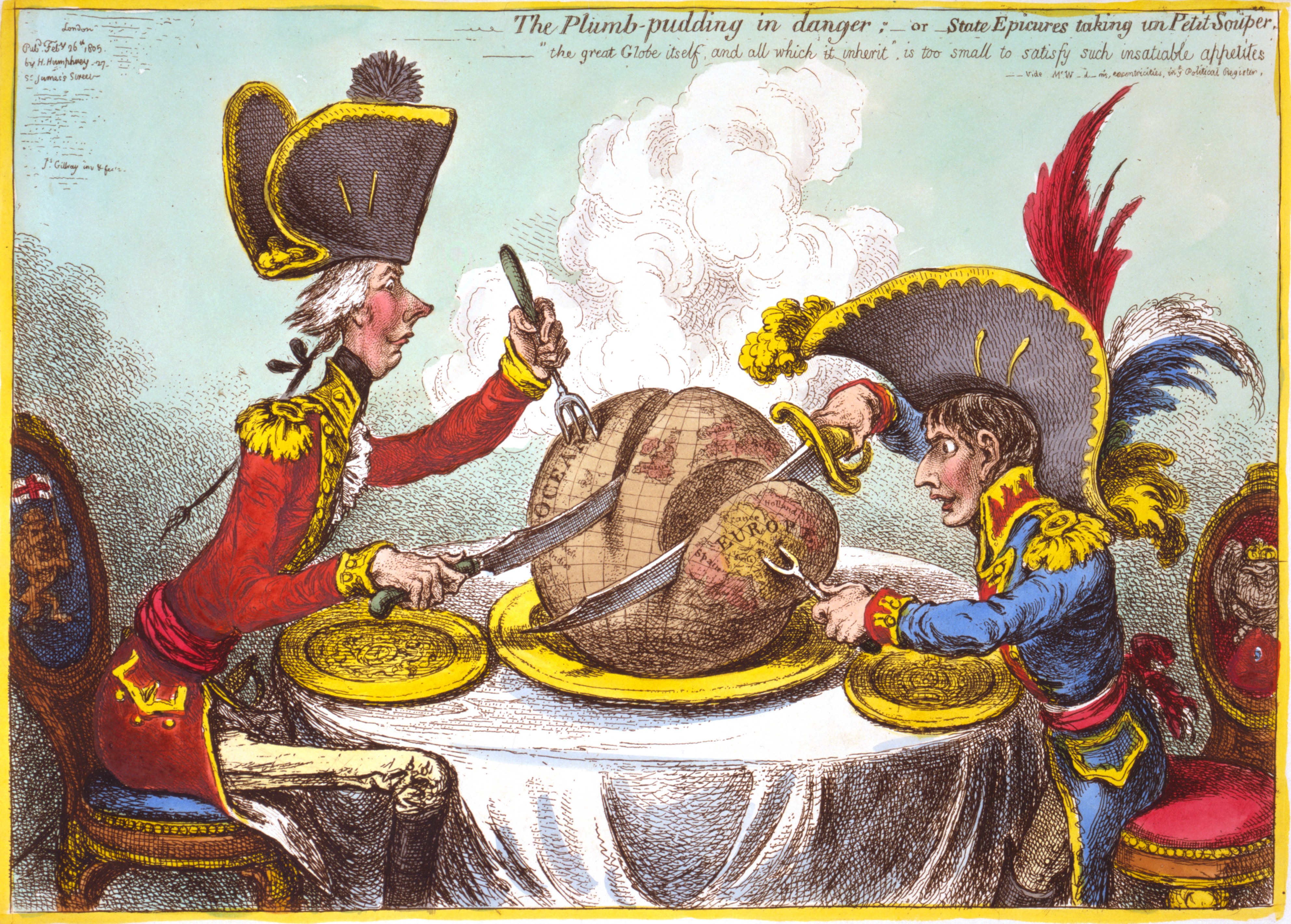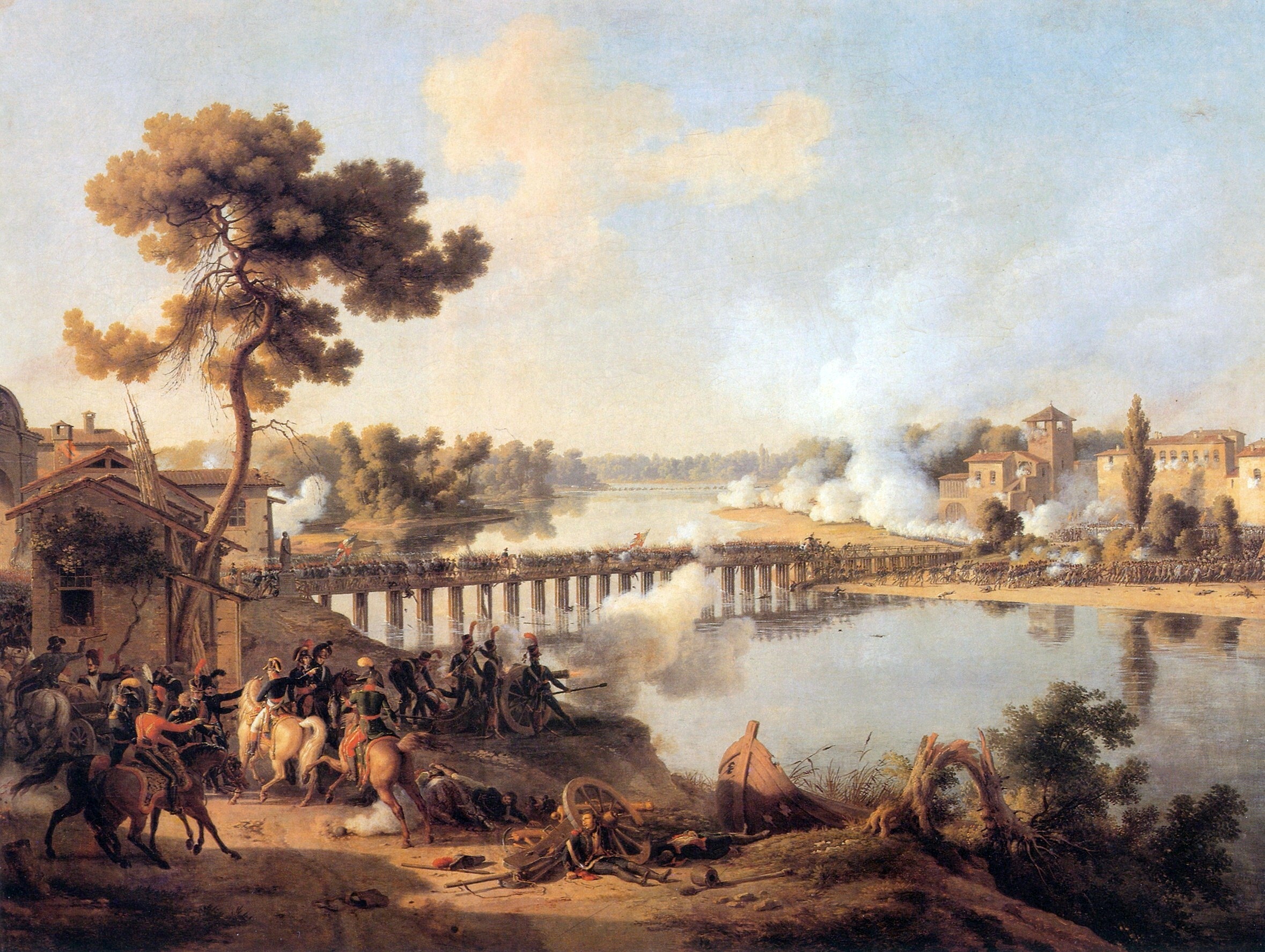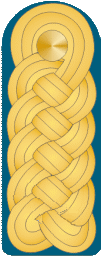|
Battle Of Wertingen
In the Battle of Wertingen (8 October 1805) Imperial French forces led by Marshals Joachim Murat and Jean Lannes attacked a small Austrian corps commanded by Feldmarschall-Leutnant Franz Xaver von Auffenberg. This action, the first battle of the Ulm Campaign, resulted in a clear French victory. Wertingen lies northwest of Augsburg. The combat was fought during the War of the Third Coalition, part of the Napoleonic Wars. Background Emperor Napoleon Bonaparte had launched his 200,000-man Grand Army across the Rhine. This huge mass of maneuver wheeled to the south and crossed the Danube River to the east of (i.e., behind) General Karl Freiherr Mack von Leiberich's concentration at Ulm. Unaware of the force bearing down on him, Mack stayed in place as Napoleon's corps spread south across the Danube, slicing across his lines of communication with Vienna. Forces Murat's advance guard included the heavy cavalry divisions of General of Division Louis Klein (16 squadrons of the 1st, ... [...More Info...] [...Related Items...] OR: [Wikipedia] [Google] [Baidu] |
War Of The Third Coalition
The War of the Third Coalition) * In French historiography, it is known as the Austrian campaign of 1805 (french: Campagne d'Autriche de 1805) or the German campaign of 1805 (french: Campagne d'Allemagne de 1805) was a European conflict spanning the years 1805 to 1806. During the war, France and its client states under Napoleon I opposed an alliance, the Third Coalition, made up of the United Kingdom, the Holy Roman Empire, the Russian Empire, Naples, Sicily and Sweden. Prussia remained neutral during the war. Britain had already been at war with France following the breakdown of the Peace of Amiens and remained the only country still at war with France after the Treaty of Pressburg. From 1803 to 1805, Britain stood under constant threat of a French invasion. The Royal Navy, however, secured mastery of the seas and decisively destroyed a Franco-Spanish fleet at the Battle of Trafalgar in October 1805. The Third Coalition itself came to full fruition in 1804–05 as Napole ... [...More Info...] [...Related Items...] OR: [Wikipedia] [Google] [Baidu] |
Marshal Of France
Marshal of France (french: Maréchal de France, plural ') is a French military distinction, rather than a military rank, that is awarded to generals for exceptional achievements. The title has been awarded since 1185, though briefly abolished (1793–1804) and for a period dormant (1870–1916). It was one of the Great Officers of the Crown of France during the and Bourbon Restoration, and one of the Grand Dignitaries of the Empire during the First French Empire (when the title was Marshal of the Empire, not Marshal of France). A Marshal of France displays seven stars on each shoulder strap. A marshal also receives a baton: a blue cylinder with stars, formerly fleurs-de-lis during the monarchy and eagles during the First French Empire. The baton bears the Latin inscription of ', which means "terror in war, ornament in peace". Between the end of the 16th century and the middle of the 19th century, six Marshals of France were given the even more exalted rank of Marshal General ... [...More Info...] [...Related Items...] OR: [Wikipedia] [Google] [Baidu] |
Nicolas Oudinot
Nicolas Charles Oudinot, 1st Count Oudinot, 1st Duke of Reggio (25 April 1767 in Bar-le-Duc – 13 September 1847 in Paris), was a Marshal of the Empire. He is known to have been wounded 34 times in battle, being hit by artillery shells, sabers, and at least twelve bullets over the course of his military career. Oudinot is one of the Names inscribed under the Arc de Triomphe, Eastern pillar Columns 13, 14. Early life Nicolas Charles Oudinot was the son of Nicolas Oudinot and Marie Anne Adam, the only one of their nine children to live to adulthood. His father was a brewer, farmer and distiller of brandy in Bar-le-Duc, Lorraine. He decided upon a military career, and served in the regiment of Medoc from 1784 to 1787, when, having no hope of promotion on account of his non-noble birth, he retired with the rank of sergeant. French Revolutionary Wars The French Revolution changed his fortunes, and in 1792, on the outbreak of war, he was elected lieutenant-colonel of the 3rd batta ... [...More Info...] [...Related Items...] OR: [Wikipedia] [Google] [Baidu] |
Antoine Charles Louis Lasalle
Antoine-Charles-Louis, Comte de Lasalle (10 May 1775, Metz6 July 1809, Wagram) was a French cavalry general during the Revolutionary and Napoleonic Wars, often called "The Hussar General". He first gained fame for his role in the Capitulation of Stettin. Over the course of his short career, he became known as a daring adventurer and was credited with many exploits. Eventually, he fought on every front and was killed at the Battle of Wagram. Early career Antoine Lasalle was born on 10 May 1775 in Metz, Lorraine province, into a family of minor nobility. His father was Pierre Nicolas de Lasalle d’Augny, an officer in the French Royal Army and a knight of the Order of Saint Louis, and his mother was Suzanne Dupuy de la Gaule. On his maternal side, Lasalle was a descendant of Abraham de Fabert, a Marshal of France. His military inclinations showed at an early age and, thanks to his family's status, when he was eleven years old he was able to join the Foreign Infantry Regiment o ... [...More Info...] [...Related Items...] OR: [Wikipedia] [Google] [Baidu] |
General Of Brigade
Brigadier general or Brigade general is a military rank used in many countries. It is the lowest ranking general officer in some countries. The rank is usually above a colonel, and below a major general or divisional general. When appointed to a field command, a brigadier general is typically in command of a brigade consisting of around 4,000 troops (four battalions). Variants Brigadier general Brigadier general (Brig. Gen.) is a military rank used in many countries. It is the lowest ranking general officer in some countries, usually sitting between the ranks of colonel and major general. When appointed to a field command, a brigadier general is typically in command of a brigade consisting of around 4,000 troops (four battalions). In some countries, this rank is given the name of ''brigadier'', which is usually equivalent to ''brigadier general'' in the armies of nations that use the rank. The rank can be traced back to the militaries of Europe where a "brigadier general", ... [...More Info...] [...Related Items...] OR: [Wikipedia] [Google] [Baidu] |
Marc Antoine De Beaumont
Marc-Antoine de Beaumont (; 23 September 1763 – 4 February 1830) a French nobleman, became a page to the king and joined the army of the Old Regime. He stayed in the army during the French Revolution and narrowly escaped being executed. During the French Revolutionary Wars he fought in the 1796 Italian campaign under Napoleon Bonaparte, leading the cavalry at Lodi and Castiglione. In 1799 he was wounded in Italy but fought there again in late 1800. After Napoleon became emperor, Beaumont led the 3rd Dragoon Division in two major campaigns during the Napoleonic Wars. He led his cavalrymen against Habsburg Austria and Russia in several actions during the War of the Third Coalition in 1805. In the War of the Fourth Coalition, he was present at Jena and fought at Prenzlau and Eylau. In 1809, he commanded a reserve formation. His brother-in-law was Marshal Louis-Nicolas Davout. Beaumont is one of the names inscribed under the Arc de Triomphe. Early career Born ... [...More Info...] [...Related Items...] OR: [Wikipedia] [Google] [Baidu] |
Louis Klein
Dominique Louis Antoine Klein (19 January 1761 – 2 November 1845) served in the French military during the French Revolutionary Wars and the Napoleonic Wars as a general of cavalry. Initially part of the house guard at the royal residences for Louis XVI, Klein left the military in 1787. During the French Revolution, he enlisted and rose rapidly from a lieutenant to a brigadier general; he participated in the French invasion of southwestern Germany in 1796, and was part of the Army of the Danube in 1799. His cavalry played critical roles in the battles of Austerlitz and Jena and Auerstadt. Following the Prussian campaign, he retired from active service, entered politics, and performed administrative duties in Paris. Klein served in the French Senate, and voted for Napoleon Bonapartes abdication in 1814; he did not participate in the Hundred Days and Louis XVIII of France raised him to the French peerage upon the second restoration. Military career Initially, Klein served in ... [...More Info...] [...Related Items...] OR: [Wikipedia] [Google] [Baidu] |
General Of Division
Divisional general is a general officer rank who commands an army division. The rank originates from the French (Revolutionary) System, and is used by a number of countries. The rank is above a brigade general, and normally below an army corps general. The rank is mostly used in countries where it is used as a modern alternative to a previous older rank of major-general or lieutenant-general. Specific countries Brazil The Brazilian rank ''general-de-divisão'' translates literally as "general of division", and is used by the army. This rank is equivalent to lieutenant-general. The air force equivalent is ''major-brigadeiro''(literally "major-brigadier"). The navy equivalent is ''vice-almirante'' (literally, vice-admiral) Chile The Chilean rank ''general de división'' translates literally as "general of division", and is used by the army. This rank is equivalent to lieutenant-general. The air force equivalent is ''general de aviación'' (literally "aviation general"). Thes ... [...More Info...] [...Related Items...] OR: [Wikipedia] [Google] [Baidu] |
Karl Freiherr Mack Von Leiberich
Karl Freiherr Mack von Leiberich (25 August 1752 – 22 December 1828) was an Austrian soldier. He is best remembered as the commander of the Austrian forces that capitulated to Napoleon's ''Grande Armée'' in the Battle of Ulm in 1805. Early career Karl Leiberich was born at Nennslingen, in the Principality of Ansbach. In 1770 he joined an Austrian cavalry regiment, in which his uncle, Leiberich, was a squadron commander, becoming an officer seven years later. During the brief War of the Bavarian Succession he was selected for service on the staff of Count Kinsky, under whom, and subsequently under the commander-in-chief Field Marshal Count Lacy, he did excellent work. He was promoted first lieutenant in 1778, and captain on the quartermaster-general's staff in 1783. Count Lacy, then the foremost soldier of the Austrian army, had the highest opinion of his young assistant. In 1785 Mack married Katherine Gabrieul, and was ennobled under the name of Mack von Leiberich. In the Tur ... [...More Info...] [...Related Items...] OR: [Wikipedia] [Google] [Baidu] |
Danube
The Danube ( ; ) is a river that was once a long-standing frontier of the Roman Empire and today connects 10 European countries, running through their territories or being a border. Originating in Germany, the Danube flows southeast for , passing through or bordering Austria, Slovakia, Hungary, Croatia, Serbia, Romania, Bulgaria, Moldova, and Ukraine before draining into the Black Sea. Its drainage basin extends into nine more countries. The largest cities on the river are Vienna, Budapest, Belgrade and Bratislava, all of which are the capitals of their respective countries; the Danube passes through four capital cities, more than any other river in the world. Five more capital cities lie in the Danube's basin: Bucharest, Sofia, Zagreb, Ljubljana and Sarajevo. The fourth-largest city in its basin is Munich, the capital of Bavaria, standing on the Isar River. The Danube is the second-longest river in Europe, after the Volga in Russia. It flows through much of Central and Sou ... [...More Info...] [...Related Items...] OR: [Wikipedia] [Google] [Baidu] |
Rhine
), Surselva, Graubünden, Switzerland , source1_coordinates= , source1_elevation = , source2 = Rein Posteriur/Hinterrhein , source2_location = Paradies Glacier, Graubünden, Switzerland , source2_coordinates= , source2_elevation = , source_confluence = Reichenau , source_confluence_location = Tamins, Graubünden, Switzerland , source_confluence_coordinates= , source_confluence_elevation = , mouth = North Sea , mouth_location = Netherlands , mouth_coordinates = , mouth_elevation = , progression = , river_system = , basin_size = , tributaries_left = , tributaries_right = , custom_label = , custom_data = , extra = The Rhine ; french: Rhin ; nl, Rijn ; wa, Rén ; li, Rien; rm, label= Sursilvan, Rein, rm, label= Sutsilvan and Surmiran, Ragn, rm, label=Rumantsch Grischun, Vallader and Puter, Rain; it, Reno ; gsw, Rhi(n), inclu ... [...More Info...] [...Related Items...] OR: [Wikipedia] [Google] [Baidu] |
Napoleon Bonaparte
Napoleon Bonaparte ; it, Napoleone Bonaparte, ; co, Napulione Buonaparte. (born Napoleone Buonaparte; 15 August 1769 – 5 May 1821), later known by his regnal name Napoleon I, was a French military commander and political leader who rose to prominence during the French Revolution and led Military career of Napoleon Bonaparte, successful campaigns during the French Revolutionary Wars, Revolutionary Wars. He was the ''de facto'' leader of the First French Republic, French Republic as First Consul from 1799 to 1804, then Emperor of the French from 1804 until 1814 and again in Hundred Days, 1815. Napoleon's political and cultural legacy endures to this day, as a highly celebrated and controversial leader. He initiated many liberal reforms that have persisted in society, and is considered one of the greatest military commanders in history. His wars and campaigns are studied by militaries all over the world. Between three and six million civilians and soldiers Napoleonic Wa ... [...More Info...] [...Related Items...] OR: [Wikipedia] [Google] [Baidu] |
.jpg)

.jpg)






